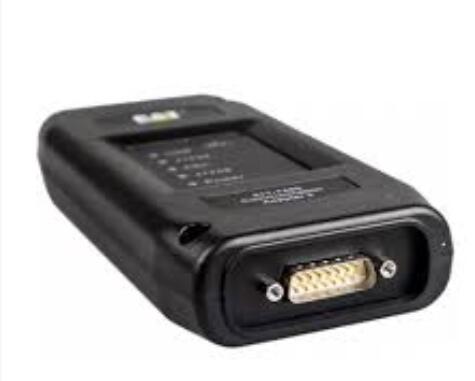
Caterpillar engines and machinery are equipped with electronic control modules (ECM) that monitor and control the operation of the engine and related systems. When the ECM detects an issue, it generates a fault code, also known as a diagnostic trouble code (DTC), which helps identify the problem for efficient troubleshooting. Here’s an overview of understanding and troubleshooting common Caterpillar fault codes:
Understanding Caterpillar Fault Codes
- Fault Code Structure: Caterpillar fault codes are typically structured as a four-digit numerical code, sometimes accompanied by additional alphanumeric characters to provide further detail.
- Categories: These codes can be categorized into various groups indicating the nature of the issue, such as engine performance, fuel system, electrical system, or emissions control, among others.
Common Caterpillar Fault Codes and Troubleshooting
- E0001 (Engine Overheating):
- Cause: Insufficient coolant, faulty water pump, blocked radiator.
- Solution: Check coolant level, inspect water pump operation, clean radiator.
- E0018 (Low Oil Pressure):
- Cause: Low oil level, worn engine components, faulty oil pump.
- Solution: Check oil level, inspect for leaks, assess engine wear, test oil pump.
- F0304 (Electrical System Fault):
- Cause: Loose or corroded electrical connections, malfunctioning sensors or actuators.
- Solution: Inspect electrical connections and wiring, test sensors and actuators.
- F0238 (Fuel Pressure Too Low):
- Cause: Clogged fuel filter, fuel line leaks, faulty fuel pump.
- Solution: Replace fuel filter, check fuel lines for leaks, test fuel pump operation.
- U0107 (Lost Communication with Throttle Actuator):
- Cause: Faulty wiring or connections, failed throttle actuator.
- Solution: Check wiring and connections, replace throttle actuator if needed.
- P0420 (Catalyst System Efficiency Below Threshold):
- Cause: Worn catalytic converter, oxygen sensor malfunction.
- Solution: Inspect catalytic converter, test oxygen sensors, replace if necessary.
Tips for Troubleshooting
- Diagnostic Tools: Use Caterpillar’s electronic diagnostic tools, such as the Electronic Technician (ET) software, to read fault codes and monitor real-time data for accurate troubleshooting.
- Service Manual: Refer to the Caterpillar service manual for detailed troubleshooting procedures specific to each fault code.
- Technical Support: For complex issues, consult with Caterpillar technical support or a certified Caterpillar service technician for expert advice.
Understanding Caterpillar fault codes is essential for effective maintenance and troubleshooting. By identifying the specific issues indicated by these codes, you can undertake targeted repairs to resolve problems efficiently, minimizing downtime and ensuring the reliable operation of your Caterpillar equipment.
The Caterpillar Electronic Technician (ET) diagnostic tool is an essential piece of equipment for diagnosing and troubleshooting faults in Caterpillar machinery and engines. This software provides real-time updates and data from the Electronic Control Modules (ECMs) of Cat equipment, allowing technicians to accurately diagnose issues. Here’s how Caterpillar ET helps in resolving Caterpillar fault codes:
Identifying Fault Codes
- Reading Codes: Caterpillar ET can read active and logged diagnostic codes from the ECM, presenting them along with a detailed description of the issue.
- Status Information: It provides status parameters that help in understanding the conditions under which a fault code was logged.
Advanced Diagnostics
- Real-Time Monitoring: With ET, technicians can monitor the operation of engines and machines in real time. This feature is particularly useful for diagnosing intermittent issues that might not always trigger a fault code.
- Graphing Data: The tool can graph operational data over time, which helps in identifying trends or conditions leading up to a fault.
Calibration and Testing
- Parameter Adjustments: ET allows for the adjustment of parameters within the ECM to meet specific application needs or to troubleshoot certain issues.
- Actuation Tests: The software can perform actuation tests for various components like injectors, valves, and solenoids to check their proper functioning.
Service Features
- Service Information: Provides access to service manuals, schematics, and other documentation relevant to the machinery being diagnosed.
- Configuration: Allows technicians to configure the ECM settings, customizing the operation of the machine for optimal performance.
Troubleshooting Guidance
- Troubleshooting Wizard: Caterpillar ET often includes troubleshooting guides or wizards for specific fault codes, offering step-by-step instructions to investigate and resolve the issue.
Updating ECM Software
- Firmware Updates: The tool can download and install the latest ECM firmware updates from Caterpillar, which might include fixes for known issues that could manifest as fault codes.
Efficiency
- Reduced Downtime: By providing detailed information and diagnostics capabilities, Caterpillar ET helps in quickly identifying and fixing issues, significantly reducing machine downtime.
- Accurate Repairs: The precision diagnostics ensure that repairs address the root cause of the problem, avoiding unnecessary replacements or work.
Usage
To use Caterpillar ET effectively:
- Training: It’s important for technicians to undergo proper training to make the most out of the diagnostic capabilities of ET.
- Regular Use: Regular diagnostics, even in the absence of a fault, can help in preventive maintenance and early detection of potential issues.
Caterpillar ET is a comprehensive tool that enhances the ability of service technicians to ensure the proper functioning and maintenance of Caterpillar equipment, directly addressing and aiding in the resolution of fault codes for efficient and effective machinery operation.
Leave a Reply